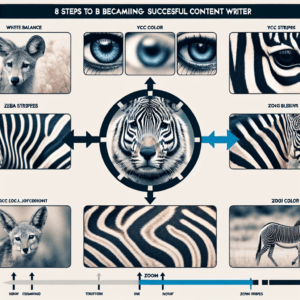Best AI-Powered Content Creation Tools To Use In 2025
As the digital landscape continues to evolve, content creators are increasingly turning to artificial intelligence to streamline their workflows and enhance the quality of their output. In 2025, AI-powered tools have become indispensable assets for writers, marketers, designers, and video producers alike. These tools not only save time but also offer innovative features that elevate the creative process. With advancements in natural language processing, machine learning, and computer vision, the capabilities of AI in content creation have reached unprecedented levels.
One of the most prominent tools in this space is Jasper AI, a writing assistant that leverages advanced language models to generate high-quality text across various formats. Whether crafting blog posts, social media captions, or email campaigns, Jasper AI provides contextually relevant suggestions and can adapt to different tones and styles. Its intuitive interface and customizable templates make it a favorite among content marketers seeking efficiency without compromising creativity.
Closely following is Copy.ai, another powerful writing tool that excels in generating marketing copy, product descriptions, and ad content. What sets Copy.ai apart is its ability to produce multiple variations of a single prompt, allowing users to choose the most suitable version for their audience. This feature is particularly useful for A/B testing and refining messaging strategies. Moreover, its integration with popular platforms like Shopify and WordPress enhances its utility for e-commerce and content management.
In the realm of visual content, Canva’s AI-powered design tools have seen significant upgrades in 2025. The platform now includes AI-driven layout suggestions, automatic image enhancements, and intelligent resizing features that adapt designs for various social media platforms. These enhancements enable users with minimal design experience to produce professional-grade visuals quickly and efficiently. Additionally, Canva’s AI can now generate custom illustrations and icons based on textual input, further expanding creative possibilities.
For video content creators, Pictory has emerged as a leading AI tool that transforms long-form content into engaging short videos. By analyzing transcripts and identifying key moments, Pictory automatically generates highlight reels suitable for social media sharing. This not only reduces editing time but also ensures that the most impactful segments are showcased. Furthermore, its voiceover capabilities, powered by synthetic speech technology, allow for the creation of narrated videos without the need for professional voice actors.
Another noteworthy mention is Descript, a comprehensive audio and video editing platform that uses AI to simplify complex editing tasks. Its standout feature, Overdub, allows users to create synthetic voiceovers in their own voice, making it easier to correct mistakes or update content without re-recording. Descript also offers automatic transcription, speaker identification, and filler word removal, making it an all-in-one solution for podcasters and video editors.
As we look ahead, the integration of AI into content creation tools is not merely a trend but a fundamental shift in how content is conceived and produced. These tools empower creators to focus more on strategy and storytelling while delegating repetitive or technical tasks to intelligent systems. With continuous improvements in AI algorithms and user interfaces, the future of content creation promises to be more efficient, accessible, and creatively fulfilling than ever before.
Top Video Editing Software For Content Creators In 2025
As the digital landscape continues to evolve, content creators in 2025 are increasingly relying on advanced video editing software to produce high-quality, engaging content. With the growing demand for visually compelling videos across platforms such as YouTube, TikTok, and Instagram, the need for powerful, intuitive, and feature-rich editing tools has never been greater. Fortunately, the market offers a wide array of options tailored to meet the diverse needs of creators, from beginners to seasoned professionals.
One of the most prominent video editing tools in 2025 is Adobe Premiere Pro. Long regarded as an industry standard, Premiere Pro continues to lead the pack with its robust suite of features, seamless integration with other Adobe Creative Cloud applications, and support for high-resolution formats. In its latest iteration, Adobe has introduced AI-powered editing suggestions, automated color correction, and real-time collaboration tools, making it easier than ever for teams to work together remotely. These enhancements not only streamline the editing process but also help creators maintain a consistent visual style across their content.
Equally noteworthy is Final Cut Pro, Apple’s flagship video editing software. Optimized for macOS and Apple Silicon chips, Final Cut Pro offers exceptional performance and speed, particularly when handling 4K and 8K footage. In 2025, the software includes advanced machine learning capabilities that assist with scene detection, audio syncing, and smart cropping. Its magnetic timeline and intuitive interface make it a favorite among creators who prioritize efficiency without compromising on creative control. Moreover, the recent addition of cloud-based project sharing has significantly improved collaborative workflows for teams using Apple devices.
For creators seeking a free yet powerful alternative, DaVinci Resolve remains a top contender. Known for its professional-grade color grading tools, Resolve has expanded its feature set to include a comprehensive suite for editing, visual effects, motion graphics, and audio post-production. The 2025 version introduces enhanced GPU acceleration, AI-driven noise reduction, and a redesigned user interface that caters to both novices and professionals. Its modular design allows users to switch between different workspaces seamlessly, making it an ideal choice for those who require flexibility and precision in their editing process.
In addition to these established platforms, newer entrants like CapCut Pro and Runway ML are gaining traction among content creators. CapCut Pro, developed by ByteDance, offers a mobile-first editing experience with cloud synchronization, making it particularly appealing to social media influencers and short-form video producers. Its user-friendly interface, combined with a growing library of templates and effects, enables quick turnaround times without sacrificing quality. Meanwhile, Runway ML leverages artificial intelligence to automate complex editing tasks such as background removal, object tracking, and style transfer. This innovative approach allows creators to focus more on storytelling and less on technical execution.
As we move further into 2025, the landscape of video editing software continues to be shaped by advancements in artificial intelligence, cloud computing, and user-centric design. Whether one is producing cinematic films, educational content, or viral social media clips, the tools available today empower creators to bring their visions to life with greater ease and sophistication than ever before.
Must-Have Graphic Design Tools For Content Creation In 2025
As the digital landscape continues to evolve, content creators in 2025 are increasingly relying on advanced graphic design tools to produce visually compelling and engaging materials. With the growing demand for high-quality content across platforms, having the right tools is no longer optional—it is essential. In this context, several graphic design tools have emerged as must-haves for professionals aiming to stay ahead in the competitive world of content creation.
One of the most prominent tools in 2025 is Adobe Creative Cloud, which remains a cornerstone for graphic designers. With continuous updates and AI-powered features, applications like Adobe Photoshop and Illustrator have become more intuitive and efficient. Photoshop now includes real-time collaboration capabilities and enhanced neural filters, allowing designers to make complex edits with minimal effort. Illustrator, on the other hand, offers vector automation tools that streamline the creation of scalable graphics, making it ideal for branding and marketing materials.
In addition to Adobe’s suite, Canva Pro has solidified its position as a go-to platform for both novice and experienced designers. Its user-friendly interface, combined with a vast library of templates, fonts, and stock images, enables users to create professional-grade visuals without extensive design knowledge. In 2025, Canva has introduced AI design assistants that suggest layout improvements and color schemes based on content type, significantly reducing the time spent on revisions.
Moving beyond traditional design software, Figma has gained widespread popularity for its collaborative features and cloud-based functionality. Particularly useful for teams working remotely, Figma allows multiple users to work on the same project simultaneously. Its integration with prototyping tools and design systems ensures consistency across various content formats, from social media graphics to web interfaces. The 2025 version includes enhanced plugin support and real-time feedback tools, making it a powerful asset for content teams.
Another noteworthy tool is Affinity Designer, which offers a cost-effective alternative to subscription-based software. Known for its precision and speed, Affinity Designer is particularly favored by illustrators and branding professionals. The 2025 update includes expanded export options and improved compatibility with other design platforms, making it easier to integrate into existing workflows.
For those focused on motion graphics and video content, Adobe After Effects continues to be indispensable. Its latest iteration features AI-driven animation presets and automated keyframing, which simplify the process of creating dynamic visual content. This is especially beneficial for content creators looking to enhance their storytelling through animated infographics or promotional videos.
Moreover, tools like VistaCreate and Crello have gained traction among social media marketers. These platforms offer drag-and-drop functionality and are optimized for creating platform-specific content, such as Instagram stories or YouTube thumbnails. In 2025, they have expanded their template libraries and introduced smart resizing features, allowing users to adapt designs across multiple formats with a single click.
In conclusion, the landscape of graphic design tools in 2025 is marked by innovation, accessibility, and collaboration. Whether one is a solo content creator or part of a larger team, leveraging these advanced tools can significantly enhance the quality and efficiency of content production. As technology continues to advance, staying informed about the latest design solutions will be key to maintaining a competitive edge in the ever-evolving world of digital content creation.


